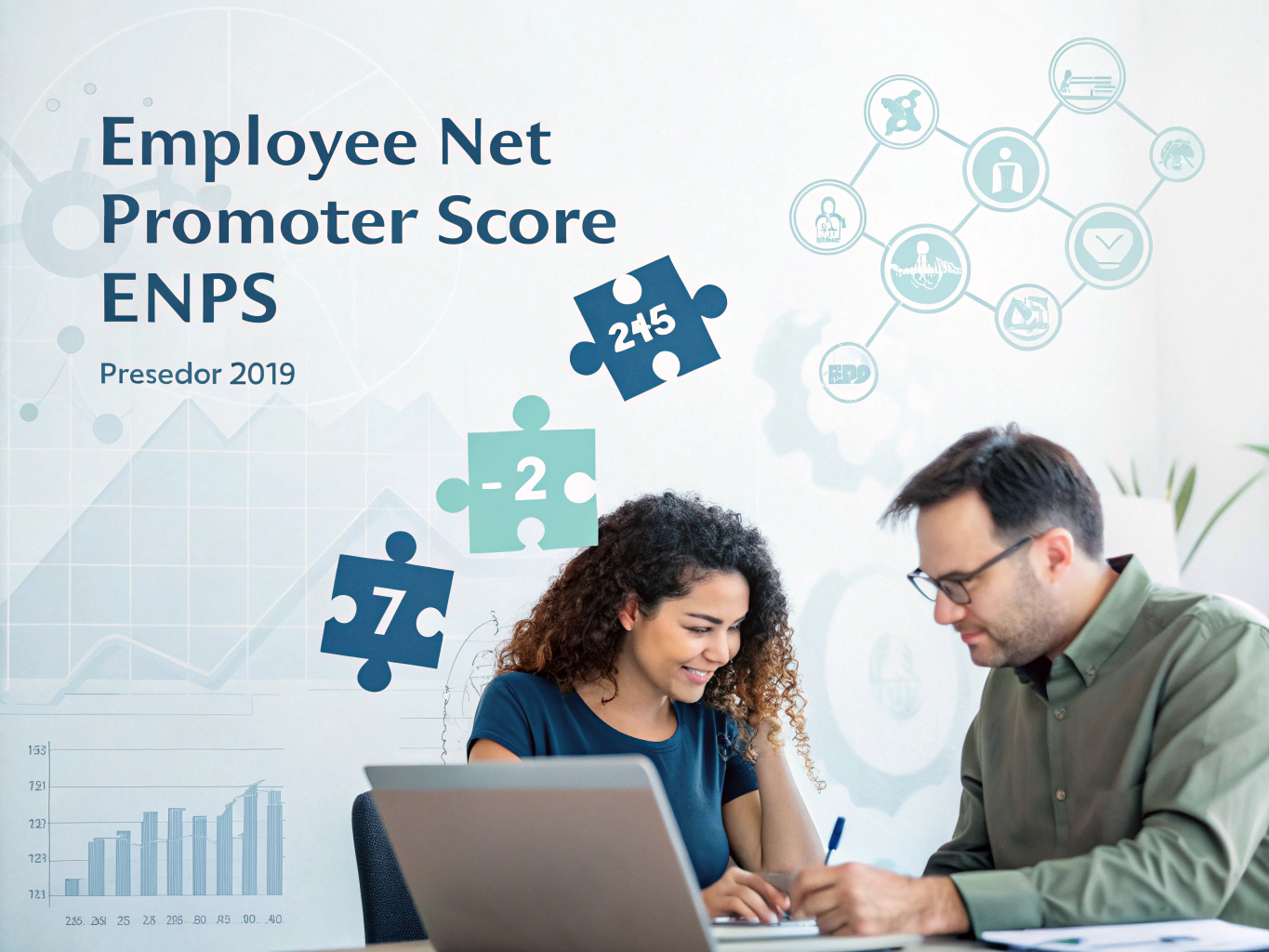Definition
The Employee Net Promoter Score (eNPS) is a straightforward yet powerful tool that helps organizations measure employee loyalty and engagement. By asking employees how likely they are to recommend their workplace to friends or family on a scale from 0 to 10, companies can gain valuable insights into their workforce’s overall sentiment. This simple question can reveal much about the company culture and employee satisfaction, making it an essential metric for any HR professional.
Key Components
Understanding eNPS involves grasping its main elements and how they contribute to your workplace dynamics. Here are some key components to consider:
- Promoters, Passives, and Detractors: eNPS categorizes responses into three groups: Promoters (scores 9-10) are enthusiastic supporters; Passives (scores 7-8) are content but unenthusiastic; and Detractors (scores 0-6) are dissatisfied employees. This classification helps you pinpoint areas of strength and those needing improvement.
- Calculation: To calculate your eNPS, subtract the percentage of Detractors from the percentage of Promoters. For example, if 40% of employees are Promoters and 20% are Detractors, your eNPS would be 20. This simple formula provides a clear, quantifiable measure of employee sentiment.
- Frequency of Surveys: Regularly conducting eNPS surveys—be it quarterly or biannually—can help track changes in employee sentiment over time. For instance, if you notice a drop in your score, it might be time to investigate potential issues affecting morale.
- Open-Ended Feedback: Accompanying the eNPS question with an open-ended query allows employees to elaborate on their ratings. This qualitative data can provide context and help identify specific areas for improvement, like management practices or workplace culture.
- Benchmarking: Comparing your eNPS with industry standards can give you a clearer picture of how your organization stacks up against competitors. This insight can inform strategic decisions and help you attract top talent in a competitive market.
Importance in the Workplace
Implementing eNPS in your workplace is crucial for fostering a positive company culture. For instance, if you discover that a significant number of employees fall into the Detractor category, it signals potential issues that could lead to high turnover rates. Addressing these concerns proactively can improve retention and promote a more engaged workforce. Additionally, a higher eNPS can enhance your employer branding, making your organization more appealing to prospective employees.
For example, suppose a tech company regularly monitors its eNPS and notices a downward trend after a significant restructuring. By diving deeper into employee feedback, they may uncover dissatisfaction with communication during the transition. By addressing these concerns, the company can not only improve its eNPS but also strengthen employee trust and loyalty.
Best Practices
To make the most out of your eNPS initiatives, consider these best practices:
- Communicate the Purpose: Clearly explain to employees why eNPS surveys are conducted and how their feedback will be used. Transparency fosters trust and encourages honest responses.
- Act on Feedback: Don’t just collect data; show employees that their opinions matter by implementing changes based on their feedback. If a number of Detractors cite work-life balance as an issue, consider introducing flexible working options.
- Follow Up: After conducting eNPS surveys, follow up with employees to share results and discuss next steps. This shows that you value their input and are committed to making improvements.
- Make it Easy: Keep your eNPS survey simple and user-friendly. A single question followed by an optional comment box can encourage higher participation rates.
- Celebrate Successes: When you see improvements in your eNPS, celebrate these wins with your team. Recognizing positive changes can boost morale and motivate employees to continue providing feedback.
Legal Considerations
While eNPS is a valuable tool for gauging employee sentiment, it’s essential to handle the data responsibly. Ensure that survey responses are anonymous and that any identifiable information is kept confidential. Be aware of local labor laws regarding employee feedback and ensure compliance to avoid legal pitfalls. This protects both the organization and the employees, fostering a safe environment for open communication.
Conclusion
Understanding and implementing the Employee Net Promoter Score can significantly enhance your workplace culture and employee engagement. By taking the time to measure and respond to employee feedback, you can create a more loyal, motivated workforce. Remember, happy employees lead to a thriving organization, so use eNPS as a stepping stone to build a better workplace for everyone involved.




